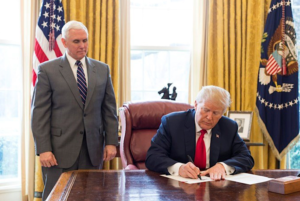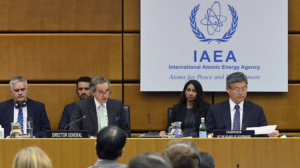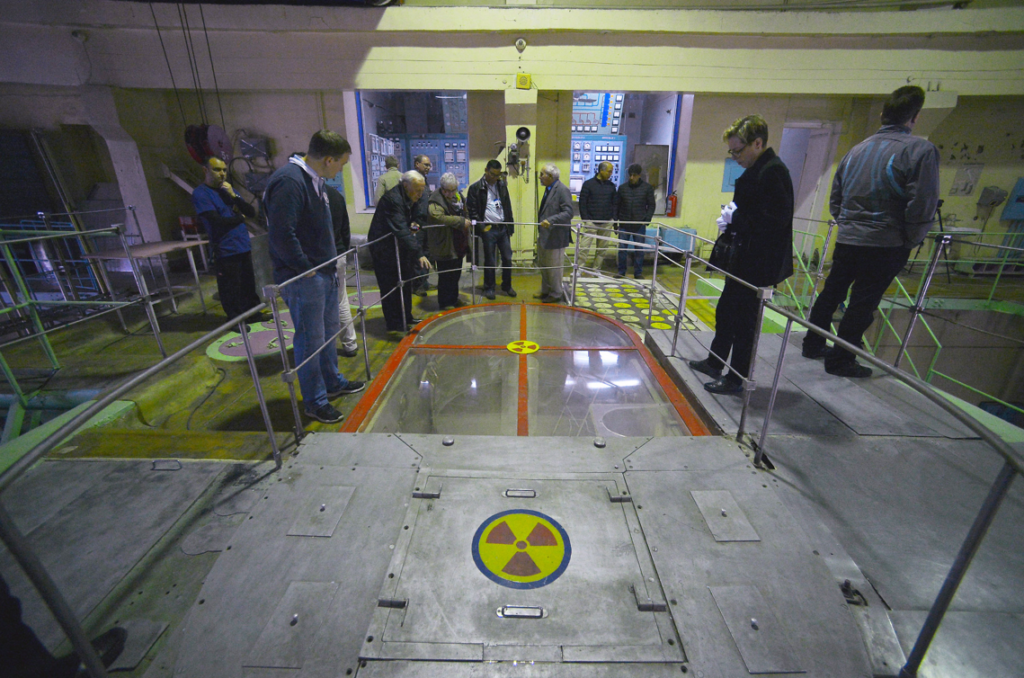Iranian Sejjil MRBM Launch © Nrf
War rages in Ukraine, but the Middle East remains true to itself – constantly close to boiling point.
And a question continues to haunt military chiefs of staff, diplomats, and politicians around the world: is the Islamic Republic of Iran “on the threshold” of nuclear power?
It is thought that the country could be able – in a matter of months – to have access to enough enriched uranium for the dreaded nuclear warhead.
In principle, the United States, China, Russia, and the European Union are, in this matter, on the same wavelength. All are convinced of an urgent need: to bring to a successful conclusion the negotiations underway in Vienna to prevent Tehran from crossing this “threshold”.
In return for the lifting of sanctions, the Islamic Republic would accept the close monitoring and supervision of its nuclear activities by the International Atomic Energy Agency (IAEA).
But the war in Ukraine certainly seems to have complicated the situation. “These things have nothing to do with each other,” US Secretary of State, Anthony Blinken affirmed to CBS recently. However, this is far from certain.
In the Russian war of aggression against Ukraine, Iran and its Arab allies – the Lebanese Hezbollah, the Syrian regime, Yemeni Houthis, and Iraqi militias – have lined up behind Moscow.
As for China, it has established a “strategic partnership” with the Islamic Republic, laying the foundations for close bilateral cooperation. Some even speak of a Moscow-Beijing-Tehran axis. Iran seems far from isolated.
But the Islamic Republic is, once again, challenged from within. It faces a wave of anger, that in many cities, is bringing to the streets an exhausted population, worn down by a dire economic situation – a by-product of gross mismanagement, Western sanctions, and the impact of the Russian-Ukrainian war on the price of food and other basic necessities.
Inflation hovers around the 40% mark, and it is estimated that 33% of Iranians are now living below the poverty line. The middle class is being gradually wiped out. To these recurring revolts, the regime – a theocracy dominated by its military branch, the Revolutionary Guards – always counters with the same response… ruthless repression.
A MATTER OF GRAVE INTERNATIONAL CONCERN
In May 2018, then-US president Donald Trump pushed for the unilateral abrogation by the United States of a previous agreement concluded between Iran and the international community in Vienna in 2015, known as the Joint Comprehensive Plan of Action (JCPOA).
Although the United States then gradually tightened its sanctions against Iran as part of its “maximum pressure strategy”, Tehran was effectively released from its obligations of abiding by the terms of the signed agreement.

The unilateral withdrawal of the United States from the Agreement did not, however, lead to the reinstatement of the UN sanctions which had been lifted in accordance with resolution 2231, despite the American attempt at a “snapback” in August 2020, which was thwarted by the fact that the United States was no longer a participant in the Agreement.
However, France, the United Kingdom, and Germany, known as the E3/EU, continued to respect all their commitments under the JCPOA despite the American withdrawal; they maintained the suspension of all European sanctions which had been lifted in January 2016 pursuant to the agreement.
They also undertook additional efforts to preserve the JCPOA with the

creation of INSTEX in January 2019. The ‘Instrument in Support of Trade Exchanges’ was a special-purpose mechanism with the aim of facilitating non-US dollar and non-SWIFT bank transactions – without breaking US sanctions – between European Union countries and Iran, in humanitarian sectors considered most essential for the Iranian population.
However, since 2019, Iran has taken a number of nuclear measures in violation of its commitments under the Joint Comprehensive Plan of Action (JCPOA), which have seriously called into question the benefits of this agreement in terms of non-proliferation.
The International Atomic Energy Agency has indeed been reporting since July 1, 2019, that Iran has successively exceeded both the authorised limit for its low-enriched uranium stockpile and the enrichment rate authorised by the agreement, freed itself from research and development constraints, resumed enrichment activities at the Fordo site, before exonerating itself from the last operational component of the limitations from January 2020.

Iran is now accumulating up to 60% enriched uranium and has started production of uranium metal, two activities that are key steps in the development of a nuclear weapon and are not justified by any credible civilian need.
At the same time, Iran substantially reduced the access of the International Atomic Energy Agency from February 23, 2021, by ceasing to apply both the verification and monitoring measures provided for by the JCPOA and the Additional Protocol to its Comprehensive Safeguards Agreement concluded with the IAEA.
ENTERING DANGEROUS, UNCHARTED WATERS
It was following what Tehran called “an act of sabotage” on its nuclear facility at Natanz in April 2021, that then-president Hassan Rouhani announced the launching of new IR-6 centrifuges and the enrichment of uranium to a level of 60%.
The Natanz nuclear plant suffered a massive power outage that was attributed to Israeli agents. “The fact that we announced today that we will activate the IR-6 centrifuges in Natanz or increase enrichment to 60% is the answer to your malice,” he told the cabinet, referring to Israel. “You cannot plot against the Iranian nation and commit crimes in Natanz,” he said, promising, “We will respond to them”.
Furthermore, the country will install an additional 1,000 centrifuges in Natanz with a 50% higher enrichment capacity, added the man who is leading Iranian negotiators at the Vienna talks with representatives from the UK, China, France, Russia, and Germany.
IR-6 centrifuges spin uranium 10 times as fast as the first-generation centrifuges that Iran was once limited to under its 2015 nuclear deal with world powers. As of February 2021, Iran already had been spinning a cascade of IR-6s at its underground facility at Fordo, according to the IAEA.
Barely 24 hours after Iran’s announcement, the governments of France, Germany, and the United Kingdom (the E3) voiced their grave concerns regarding the new levels of enrichment, using advanced centrifuges as Iran communicated to the IAEA. They emphasised that this is a serious development since the production of highly enriched uranium constitutes an important step in the production of a nuclear weapon. Iran has no credible civilian need for enrichment at this level.

They also expressed their concern at the news that Iran plans to install 1000 additional centrifuges at Natanz, which will significantly increase its enrichment capacity. Iran’s announcements were particularly regrettable given they come at a time when all JCPOA participants and the United States have started substantive discussions, with the objective of finding a rapid diplomatic solution to revitalise and restore the JCPOA. Iran’s dangerous recent communication is contrary to the constructive spirit and good faith of these discussions.
In light of recent developments, all the participants rejected escalatory measures by any actor and called upon Iran not to further complicate the diplomatic process.
Iran is in fact, expected to reach a new dangerous, destabilising threshold, having enough highly enriched uranium (HEU) to fashion a nuclear explosive, about 40-42 kilograms (kg) of 60 percent enriched uranium.
With this quantity, an enrichment level of 60 percent suffices to create a relatively compact nuclear explosive; further enrichment to 80 or 90 percent is not needed. According to the International Atomic Energy Agency, 41.7 kg of 60 percent enriched uranium (uranium mass) is a significant quantity, which the IAEA defines as the “approximate amount of nuclear material for which the possibility of manufacturing a nuclear explosive cannot be excluded”.
A common fallacy is Iran would require 90 percent HEU, more commonly called weapon-grade uranium, to build nuclear explosives. Although Iran’s nuclear weapons designs have focused on 90 percent HEU and probably prefer that level of enrichment, modifying them for 60 percent HEU would be straightforward and well within Iran’s capabilities.

Historically, the term highly enriched uranium was developed in the nuclear-weapon states to distinguish between enriched uranium able to fuel a practical nuclear weapon versus enriched uranium, labeled low enriched uranium, unable to do so.
Their cut-off is at 20 percent enriched uranium. At the least, a device made from 60 percent HEU would be suitable for underground nuclear testing or delivery by a crude delivery system such as an aircraft, shipping container, or truck, sufficient to establish Iran as a nuclear power.
INTENSIVE DIPLOMATIC EFFORTS
The arrival in January 2021 of a new US administration in favour of a return of the United States to the JCPOA marked an important turning point for our efforts to preserve the agreement.
US President Joe Biden has been very clear from the outset of his term in favour of negotiations aimed at the return of the United States as a participant in the agreement, as soon as Iran also returns to full implementation and of its nuclear commitments under the agreement.
In this new context, negotiations for the rapid return of the United States to the JCPOA and of Iran to the full implementation of its nuclear commitments under this agreement began on April 2, 2021.

They are taking place between the countries participating in the JCPOA, that is, the European Union E3 (France, the United Kingdom, Germany), Russia, and China, and indirectly, with the United States, under the coordination of the European External Action Service (EEAS).
The working sessions were temporarily suspended between June 20 and November 29, 2021, pending the establishment in Iran of a new administration, following the election of hardline president Ebrahim Raisi.
These negotiations have continued almost without interruption in Vienna since that date.
The objective for the European E3 partners, France, the United Kingdom, and Germany is clear. To put an end to Iran’s serious nuclear violations, some of which have irreversible proliferation consequences, and restore the non-proliferation benefits of the agreement, fully restore the IAEA’s monitoring and verification capabilities in Iran provided for in the JCPOA, and lift US sanctions, contrary to the JCPOA in key sectors for Iran, with the prospect of significant economic benefits for the Iranian people.
HOW HAS THE EUROPEAN UNION PERFORMED ?
Efforts to find a diplomatic solution to the dispute about Iran’s nuclear programme are the most ambitious and high-profile action taken by the European Union to date in the field of non-proliferation. Over 10 years of engagement, the EU has played an important role in
preventing a military escalation of the conflict.
Even though the context of European engagement changed significantly, the EU and the E3 (France, Germany, and the United Kingdom) have consistently promoted a non-military solution to the conflict on the basis of improved, though fluctuating Iranian guarantees about the peaceful nature of its nuclear programme.

The EU has also brought the USA closer to its dual-track approach and thus avoided a repetition of the transatlantic split after the 2003 US-led invasion of Iraq.
In dealing with Iran, the EU has revised its policy of ‘effective multilateralism’, as described in the 2003 European Security Strategy, and as the conflict over Iran’s nuclear programme unfolded, the EU and the E3 focused more on maximising tactical advantages in direct negotiations with Iran, rather than on a diplomatic initiative that would comprehensively address Iranian concerns and interests.
In the short term, the EU might try to capitalise on new opportunities for finding a way out of the deadlock over Iran’s nuclear programme by defining what a final deal could look like and outlining steps toward such an agreement.
THE THREAT PERSISTS
On 30 and 31 October 2021, leaders of the G20 group of nations met for a two-day summit hosted by the Italian G20 presidency in Rome. The European Union was represented by Charles Michel, President of the European Council, and Ursula von der Leyen, President of the European Commission.
In the face of what continues to be perceived as a persistent threat, the following common declaration was adopted by the leaders of the European E3 and the United States at the close of the meeting, “We express our determination to ensure that Iran can never build or acquire a nuclear weapon, and our deep and growing concern at the accelerating pace of Iran’s provocative nuclear activities, such as the production of highly enriched uranium and enriched uranium metal, despite the fact that Iran has suspended negotiations on its return to the Joint Comprehensive Plan of Action (JCPOA) since June. There is no credible civilian need in Iran to conduct these activities, but both are important for the production of a nuclear weapon.
These measures are particularly troubling because Iran has at the same time reduced its cooperation with and

transparency towards the International Atomic Energy Agency (IAEA). We agree that Iran’s continued nuclear progress and the obstacles it imposes on the IAEA’s work will undermine the possibility of a return to the JCPOA”.
The current situation underscores the need for a negotiated solution that brings Iran and the United States back into compliance with the JCPOA and lays the groundwork for a continued diplomatic dialogue to address other issues of concern to the E3, the United States, and Iran. President Biden’s clear expression of his desire to see the United States return to compliance with the JCPOA, and continue to do so as long as Iran does so was naturally very welcome.
A return to the JCPOA will effectively allow for a lifting of sanctions that will have a lasting impact on Iran’s economic growth. This, of course, will only be possible if Tehran changes its course. And it is for Iran’s leaders to seize this opportunity and resume a good faith effort to bring the ongoing negotiations to a successful conclusion as a matter of urgency. This seems to be the only sure way of avoiding a dangerous escalation, which is in the interest of no country.
HOPES ARE DASHED YET AGAIN
On 9 June 2022, the Board of Governors of the International Atomic Energy Agency (IAEA) adopted by a large majority, a resolution formally calling Iran to order for its lack of cooperation. The text, submitted by the United States and the E3 (United Kingdom, France, and Germany), is the first reprimand against Tehran voted on by the UN agency since June 2020, against a backdrop of the escalation of the Iranian nuclear programme and the deadlock in negotiations to resuscitate the 2015 agreement. The resolution was approved by thirty members of the board of governors, with only Russia and China voting against it. Three countries also abstained (India, Libya, and Pakistan).

The resolution urges Iran to “comply with its legal obligations” and to “cooperate” with the IAEA, which in a recent report, deplored the absence of “technically credible” answers concerning traces of enriched uranium found at three undeclared sites. Of symbolic significance at this stage, the resolution may be the prelude to the transfer of the dispute to the United Nations Security Council, which is empowered to impose sanctions.
“Iran has no hidden nuclear activities or unreported sites,” Mohammad Eslami, head of Iran’s Atomic Energy Organisation (AEIO), said following the announcement, accusing Western nations of wanting to “keep maximum pressure with this political resolution”. In response, the Islamic Republic began disconnecting 27 surveillance cameras as well as the online enrichment monitors (OLEMs) on nuclear sites in the country, according to a statement from the IAEA.
For Rafael Mariano Grossi, Director General of the IAEA, this action could deal a “fatal blow” to the nuclear agreement concluded in 2015. Mr. Grossi had previously warned that without the cameras, Iran could manufacture centrifuges and divert them to unknown locations. For its part, the Iranian government did not immediately admit that it was removing the 27 cameras, although it had previously threatened to take tougher action. State media aired footage showing workers unplugging two IAEA cameras one day after the announcement of the resolution.

In addition to disabling the cameras, Iran has informed the IAEA of the installation of two new cascades of advanced centrifuges on the Natanz site, thus significantly strengthening its uranium enrichment capacity. The IAEA can continue inspections and still has 40 cameras on-site, but this new move by Tehran results in “less transparency, more doubts,” Grossi explained. He called on Iran to resume dialogue once “the emotion subsided”.
“We hope they will come to their senses and respond to Iran’s cooperation with cooperation,” Behrouz Kamalvandi, a spokesman for Iran’s nuclear program, said of the IAEA officials. “It is not acceptable for them to show inappropriate behaviour while Iran continues to cooperate.
FROM DIPLOMATIC HOPE TO FURTHER ESCALATION
Clearly, Tehran’s policy of blowing hot and cold on these sensitive nuclear issues, not to mention the recent disconnection of surveillance cameras, have revived the gravest concerns of the IAEA, the European E3 and the United States. Talks for a new Iranian nuclear deal that seemed to be on the way to success a few months ago are now paralysed.
After months of indirect negotiations in Vienna, via European mediation, a text was indeed about to be signed. It was to allow the partial lifting of US sanctions and a return of Iran to the spirit of the 2015 JCPOA agreement.

The unilateral withdrawal of the US and the return of sanctions, aggravating the poverty of Iranian society have discredited this agreement, concluded in 2015 by the so-called ‘moderates’, including former President Hassan Rouhani.
A consequence of the US withdrawal was the triumph of the most conservative fringes of the Iranian political class in the legislative elections of 2020, followed by the presidential election of 2021.
Deprived of its American sponsor and its Iranian signatories, the agreement survived with difficulty until 2021 and the arrival of Democrat Joe Biden who was determined to resuscitate the agreement.
How, then, can one explain the current impasse? For one thing, Iran has meanwhile set a new condition: the removal of the Revolutionary Guards, the elite corps of the Iranian army, from the American list of “terrorist organisations”. A request to which the American envoy for Iran, Robert Malley, responded at the end of March 2022 with a categorical refusal, “including in the event of an agreement”, he hastened to add.
Placing the Revolutionary Guards on the list of terrorist organisations was a decision taken by Donald Trump in 2019, with a view to exercising a ‘policy of maximum pressure’ against the Iranian regime. However, this measure was, at the time, clearly aiming to pressurise Tehran, in the hope of renegotiating a tougher agreement with Iran.
The Islamic Republic is ruled by the ultra hardliners, and those called the Revolutionary Guards constitute the core of the power structure. To be placed on the list of terrorist organisations by Washington is unacceptable for the ruling elite and its supporters ; it is a question of both ideology and national pride.

For the United States, the question of the Revolutionary Guards is more of a domestic political issue. President Joe Biden and the Democrats are in a somewhat uncomfortable position as the midterm elections approach, and the idea of being tough on Iran is an electoral selling point.
But in Europe the feeling seems to be that the priority for Washington should be the issue of collective security represented by the closure of the Iranian nuclear file.
The current escalation risks leading one of the parties to go too far, which will bring us into a period of tensions even higher than those caused by Russia’s ongoing war in Ukraine.
TWO POSSIBLE DIRECTIONS
US Secretary of State, Antony Blinken warned that the latest “provocations” by Tehran risked leading to “an aggravated nuclear crisis” and “increased economic and political isolation of Iran”. But at the same time, he left the door open to diplomacy, saying he still wanted to save the nuclear deal. At this stage, its relaunch would still respond “strongly to the national security interests” of the United States, it was explained in his entourage.
According to certain experts, things can go in two different directions: the latest tensions can either push Tehran and Washington to go for the compromise that is on the table, or on the contrary, cause another cycle of escalation that will only get worse.

But the the E3 and the EU can play a prominent role in fostering an agreement. Europe’s most important role has been to caution against the consequences of a military strike against Iran’s nuclear programme. This needs to remain a clear priority for the EU. Based on the history of negotiations, however, the E3+3 should go further in defining what a final deal could look like, and provide leadership by outlining steps toward such an agreement.
The EU has been consistently keen to frame the conflict over Iran’s nuclear programme in a regional context. The EU has tried hard to be an honest broker to prepare a conference on a zone free of weapons of mass destruction that was planned for as long ago as 2012.
Despite the decision to postpone that meeting, the idea of creating a WMD-free zone in the Middle East remains probably one of the best opportunities to address many of the divergent interests that make a resolution of the conflict over Iran’s nuclear programme so difficult.

